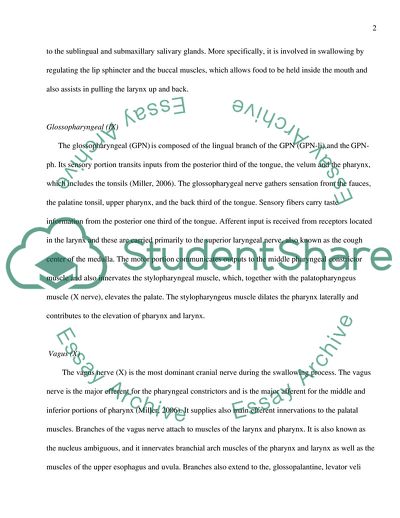Cite this document
(Cranial Nerves Essay Example | Topics and Well Written Essays - 1500 words, n.d.)
Cranial Nerves Essay Example | Topics and Well Written Essays - 1500 words. https://studentshare.org/health-sciences-medicine/1705403-which-cranial-nerves-are-involved-in-swallowing-in-what-way-how-would-you-objectively-measure-their-function-in-swallowing
Cranial Nerves Essay Example | Topics and Well Written Essays - 1500 words. https://studentshare.org/health-sciences-medicine/1705403-which-cranial-nerves-are-involved-in-swallowing-in-what-way-how-would-you-objectively-measure-their-function-in-swallowing
(Cranial Nerves Essay Example | Topics and Well Written Essays - 1500 Words)
Cranial Nerves Essay Example | Topics and Well Written Essays - 1500 Words. https://studentshare.org/health-sciences-medicine/1705403-which-cranial-nerves-are-involved-in-swallowing-in-what-way-how-would-you-objectively-measure-their-function-in-swallowing.
Cranial Nerves Essay Example | Topics and Well Written Essays - 1500 Words. https://studentshare.org/health-sciences-medicine/1705403-which-cranial-nerves-are-involved-in-swallowing-in-what-way-how-would-you-objectively-measure-their-function-in-swallowing.
“Cranial Nerves Essay Example | Topics and Well Written Essays - 1500 Words”. https://studentshare.org/health-sciences-medicine/1705403-which-cranial-nerves-are-involved-in-swallowing-in-what-way-how-would-you-objectively-measure-their-function-in-swallowing.


